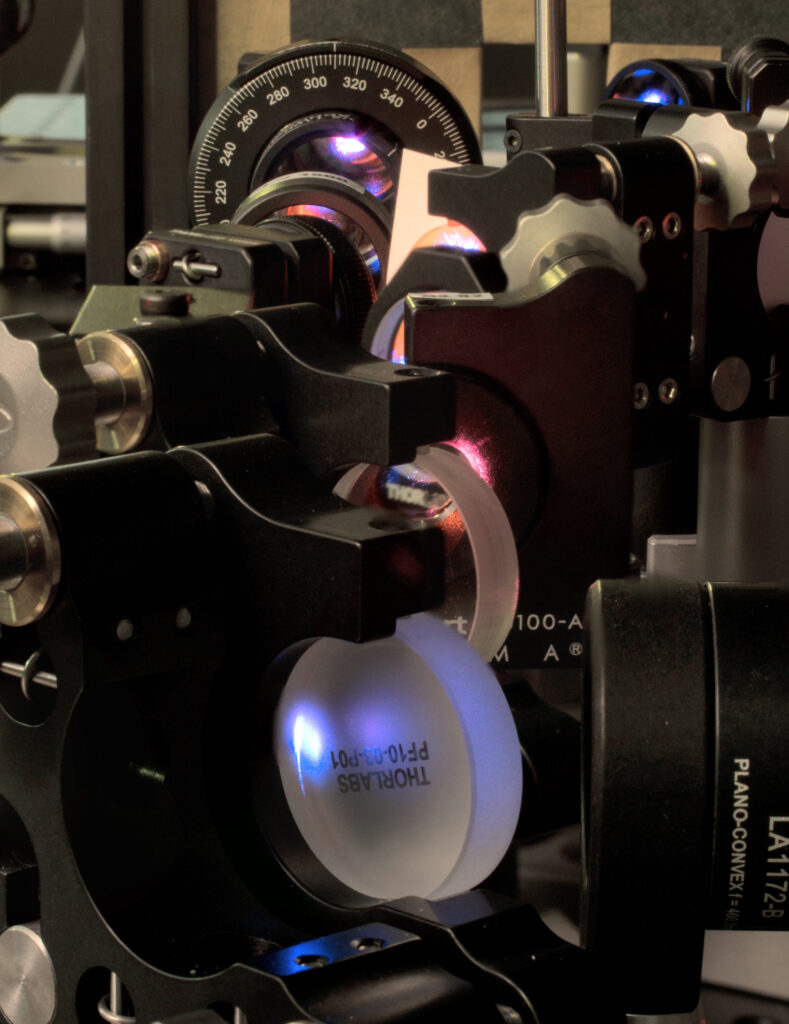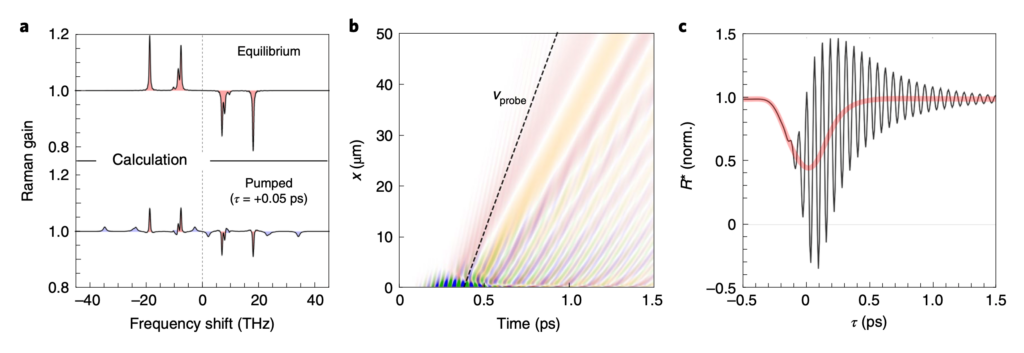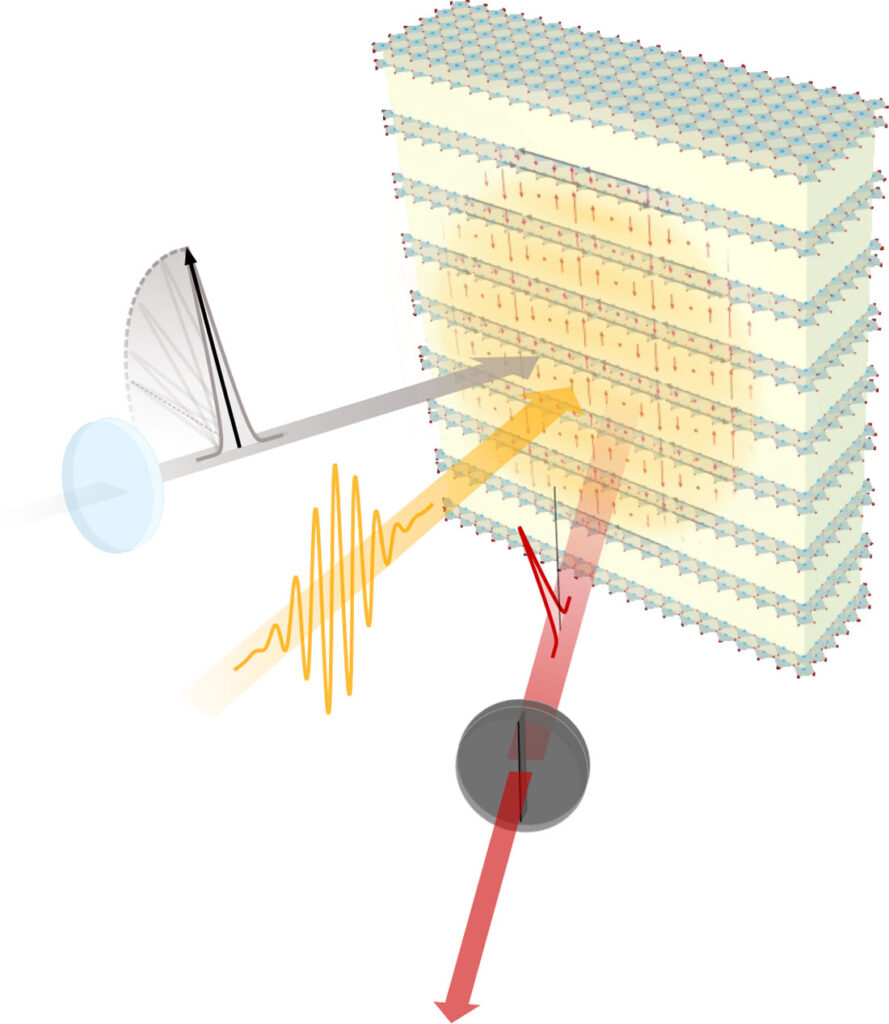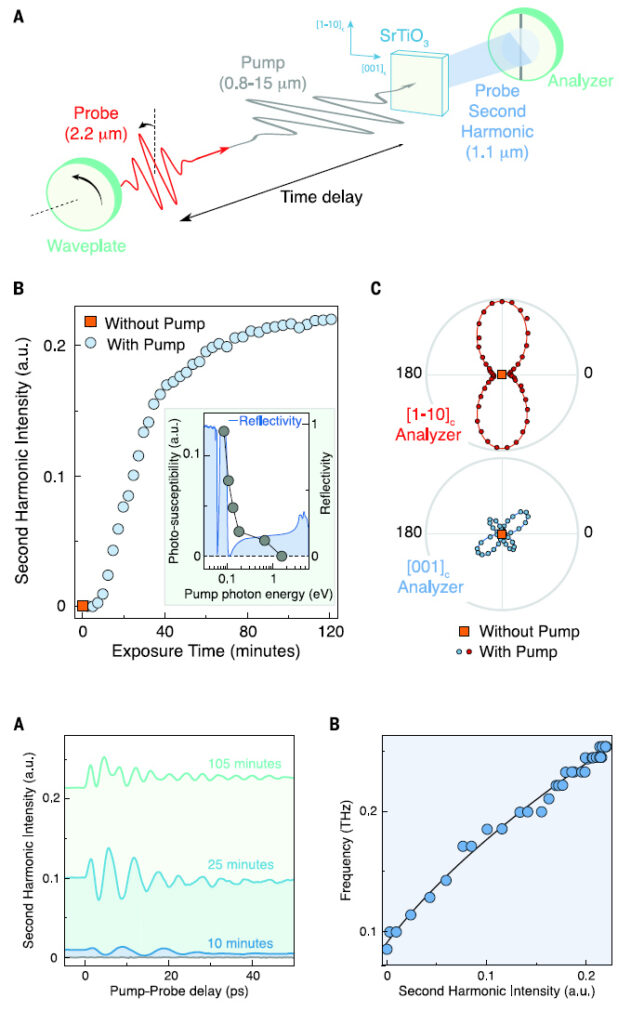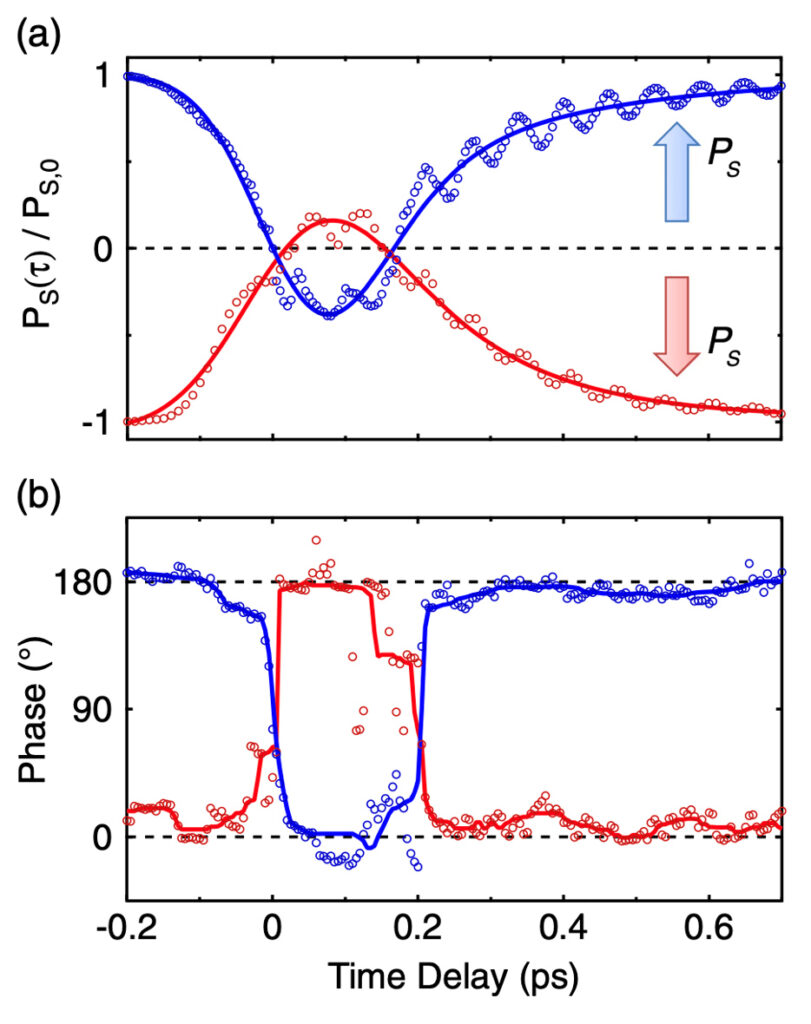The high peak electric fields of ultrashort laser pulses provide access to the nonlinear optical susceptibility of a material. This quantity enables a highly sensitive detection of symmetry information otherwise not accessible by linear optical probes. Optical second harmonic generation, for example, allows for efficient sensing of broken inversion symmetries induced by ferroelectric polarization or magnetic order. We routinely extend this nonlinear probe to the time domain to detect the dynamics of coherently driven infrared-active phonons, Josephson plasma oscillations and the ferroelectric order parameter. In addition we use time-resolved stimulated Raman scattering to probe the dynamics of phonon anharmonicities in the framework of nonlinear phononics.
Relevant publications
Nonlocal nonlinear phononics
M. Henstridge, M. Först, E. Rowe, M. Fechner, A. Cavalleri
Nature Physics, 18, 457–461 (2022)
Abstract
Nonlinear phononics relies on the resonant optical excitation of infrared-active lattice vibrations to induce targeted structural deformations in solids. This form of dynamical crystal structure design has been applied to control the functional properties of many complex solids, including magnetic materials, superconductors and ferroelectrics. However, phononics has so far been restricted to protocols in which structural deformations occur within the optically excited volume, sometimes resulting in unwanted heating. Here, we extend nonlinear phononics to propagating polaritons, spatially separating the functional response from the optical drive. We use mid-infrared optical pulses to resonantly drive a phonon at the surface of ferroelectric LiNbO3. Time-resolved stimulated Raman scattering reveals that the ferroelectric polarization is reduced over the entire 50 μm depth of the sample, far beyond the micrometre depth of the evanescent phonon field. We attribute this effect to the anharmonic coupling between the driven mode and a polariton that propagates into the material. For high excitation amplitudes, we reach a regime in which the ferroelectric polarization is reversed, as revealed by a sign change in the Raman tensor coefficients of all the polar modes.
Amplification of Superconducting Fluctuations in Driven YBa2Cu3O6 + x
A. von Hoegen, M. Fechner, M. Först, N. Taherian, E. Rowe, A. Ribak, J. Porras, B. Keimer, M. Michael, E. Demler, and A. Cavalleri
Physical Review X, 12, 031008 (2022)
Abstract
In cuprate high-Tc superconductors, resonant excitation of certain lattice vibrations has been shown to induce transient terahertz reflectivity features suggestive of nonequilibrium superconductivity above the critical temperature Tc. A microscopic mechanism for these observations is still lacking. Here, timeresolved measurements of scattering-angle- and polarization-dependent second-harmonic generation in driven YBa2Cu3O6+x reveal a three-order-of-magnitude amplification of a 2.5-THz electronic mode, which is unique because of its symmetry, momentum, and temperature dependence. A theory for amplification of finite-momentum Josephson plasma polaritons, which are assumed to be well formed below Tc but incoherent throughout the pseudogap phase, explains all these observations. A theoretical solution for the Fresnel-Floquet reflection that starts from the coherently oscillating Josephson plasma polaritons provides a possible mechanism for the nonequilibrium superconductorlike terahertz reflectivity reported earlier. Beyond the immediate case of cuprates, this work underscores the role of nonlinear mode mixing to amplify fluctuating modes above the transition temperature in a wide range of materials.
Metastable ferroelectricity in optically strained SrTiO3
T. Nova, A. Disa, M. Fechner, A. Cavalleri
Science, 364, 1075-1079 (2019)
Abstract
Fluctuating orders in solids are generally considered high-temperature precursors of broken symmetry phases. However, in some cases, these fluctuations persist to zero temperature and prevent the emergence of long-range order. Strontium titanate (SrTiO3) is a quantum paraelectric in which dipolar fluctuations grow upon cooling, although a long-range ferroelectric order never sets in. Here, we show that optical excitation of lattice vibrations can induce polar order. This metastable polar phase, observed up to temperatures exceeding 290 kelvin, persists for hours after the optical pump is interrupted. Furthermore, hardening of a low-frequency vibration points to a photoinduced ferroelectric phase transition, with a spatial domain distribution suggestive of a photoflexoelectric coupling.
Ultrafast reversal of the ferroelectric polarization
R. Mankowsky, A. von Hoegen, M. Först, A. Cavalleri
Physical Review Letters, 118, 197601 (2017) [Editors‘ Suggestion]
Abstract
We report on the demonstration of ultrafast optical reversal of the ferroelectric polarization in LiNbO3. Rather than driving the ferroelectric mode directly, we couple to it indirectly by resonant excitation of an auxiliary high-frequency phonon mode with femtosecond midinfrared pulses. Because of strong anharmonic coupling between these modes, the atoms are directionally displaced along the ferroelectric mode and the polarization is transiently reversed, as revealed by time-resolved, phase-sensitive, secondharmonic generation. This reversal can be induced in both directions, a key prerequisite for practical applications.

